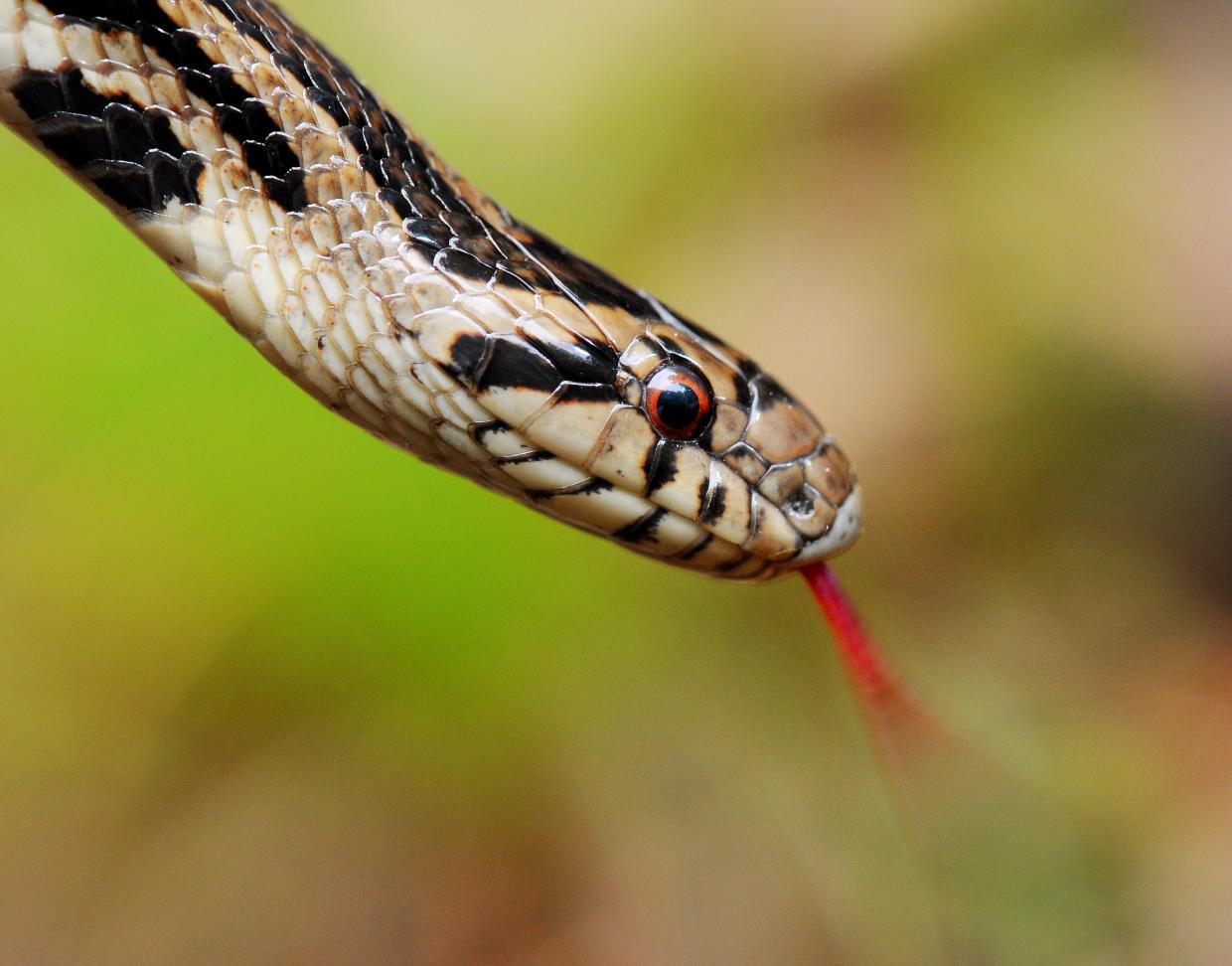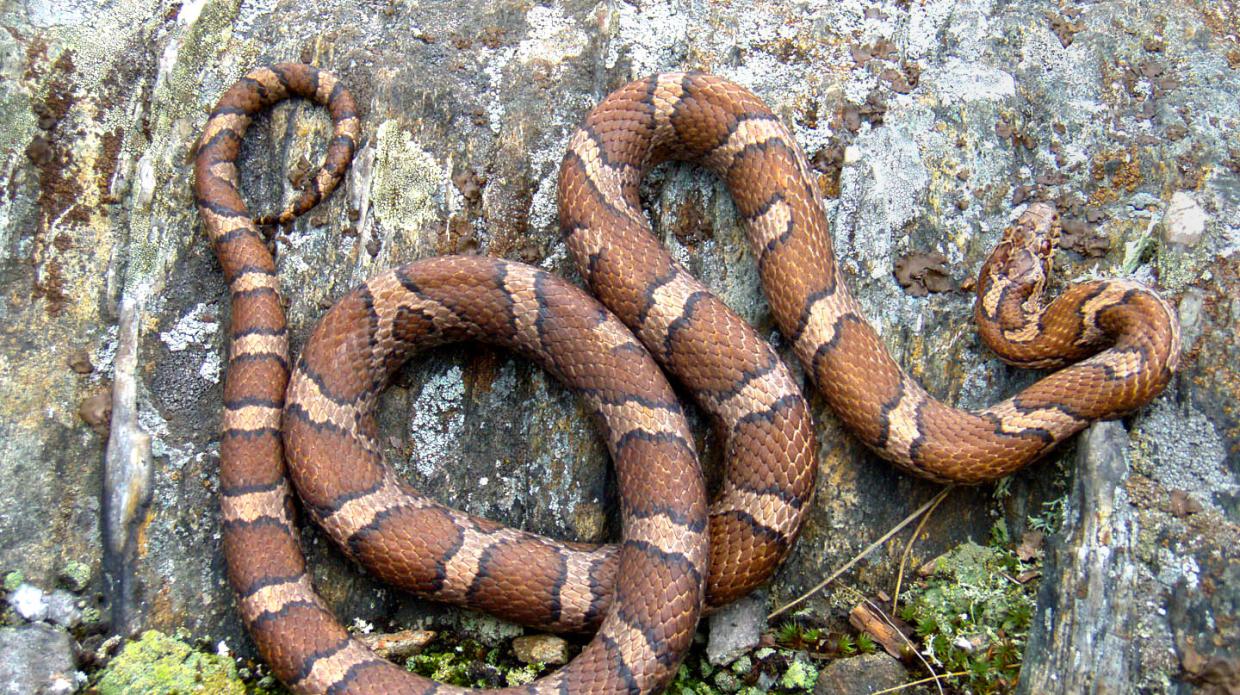Fast facts
Common name: Milksnake
Scientific name: Lampropeltis triangulum
Range in MA: Statewide
Conservation status: Common, not listed
Fun fact: Common name comes from old, false stories about these snakes (often found around barns) drinking milk from the udders of cows.
Similar species: Copperhead
Identification tips: Milksnakes differ from copperheads by having rounder pupils and smoother scales.
Description
Because they are mostly nocturnal in summer, milksnakes are sometimes harder to recognize. They have round pupils, smooth scales and a line of dark brown to deep reddish brown, irregularly shaped patches down the center of their backs. Each saddlemark patch has a fine black border. Smaller, similar patches are mirrored on the sides. Many have a light Y- or V-shaped mark on the back of their heads and necks. Their bellies have irregular black and white checkerboard patterns. Hatchlings are often redder than adults. Adults range from 24–48+ inches in length.
Habitat
Milksnakes are abundant and live a variety of habitats, including rocky hillsides, overgrown fields, woodlands, and the borders of marshes. They are also commonly encountered in and around barns, basements, wood piles, stone walls, stone foundations, and outbuildings.
Life history
Mating takes place in spring. Females deposit clutches of a few to a dozen or more eggs in rotting logs or under rocks in June and July. Young are roughly 6–10 inches at hatching. Milksnake diets consist primarily of small mammals and other snakes; they specialize in tracking mice to their nests. Milksnakes can live for 20 years or longer.

